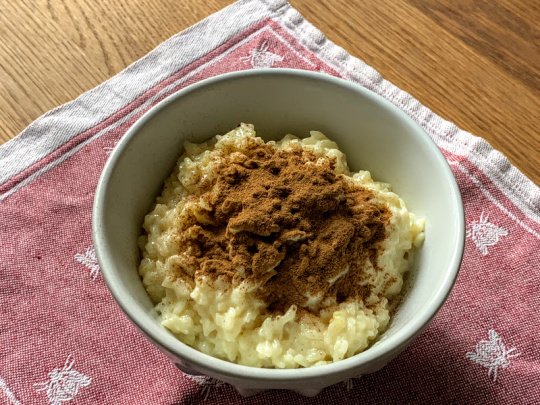
As elsewhere in Europe, imported rice was regarded for a long time as a luxury ingredient in Hungary and reserved for special occasions. Until the 19th century, wedding receptions often ended with a serving of rice porridge cooked in sugary milk and boosted with ginger. Today, similar to the semolina porridge, tejberízs is mainly a comfort food and especially popular among children.
Ingredients
Yield: 3-4 servings; Total time: 25 minutes
For the porridge
3 cups whole milk
5 tablespoons sugar (60 grams or ⅓ cup)
Half a vanilla bean, seeds scraped from pod, or ½ teaspoon vanilla extract (or ½ teaspoon vanilla sugar)
250 grams (1 ¼ cup) long-grain rice (see note at the bottom on rice variety)
1 tablespoon freshly grated lemon zest (using 1 medium lemon)
2 tablespoons butter
Pinch of salt
For the toppings
Popular options include cocoa powder, cinnamon sugar, and runny fruit preserves
Directions
Step 1: Wet a medium pot with two tablespoons water to prevent scorching, then add milk and heat on medium-high.
Step 2: Add sugar, vanilla bean and pod (or extract or vanilla sugar), pinch of salt and stir well to dissolve. Then add rice and stir continuously at a low simmer until rice is soft but not mushy and porridge has thickened to a nearly creamy consistency, about 15-20 minutes.
Step 3: Turn off heat. Stir in grated lemon zest and butter.
Step 4: Porridge should still be a little runny when you turn off heat because it will continue to thicken as it cools down. Remove vanilla pod and pour immediately into serving plates and let diners add the toppings for themselves.
Words of advice
Most people in Hungary use regular long-grain rice for tejberízs but a medium-grain variety like risotto rice will yield an even creamier result as the rice grains cling better to each other.
My content is free and independent. If you've enjoyed this article, please consider supporting me by making a one-time payment (PayPal, Venmo).
I created these recipes with the help of nearly a dozen historical Hungarian cookbooks, adjusting ingredients, cooking times, and methods to reflect my own preferences and tastes of the current day. Do you have any feedback? Please let me know!